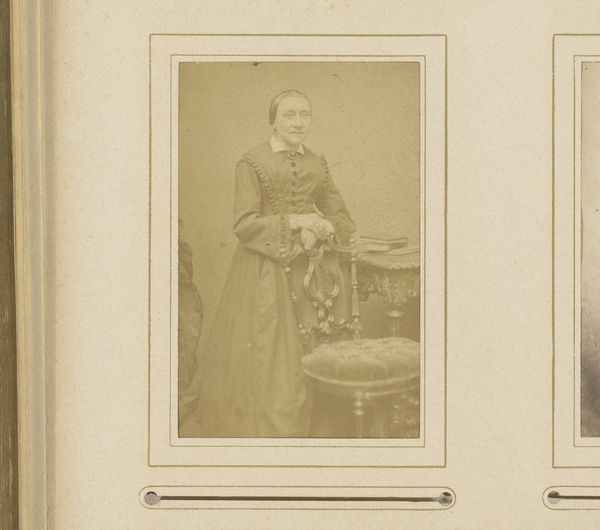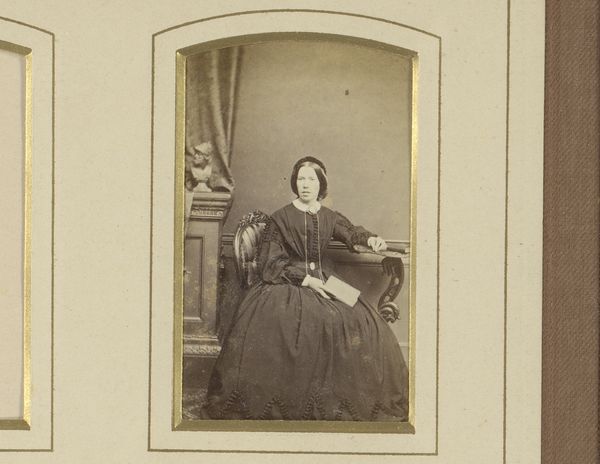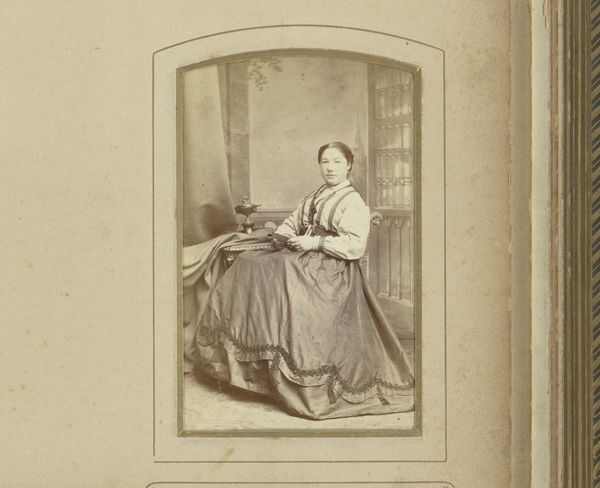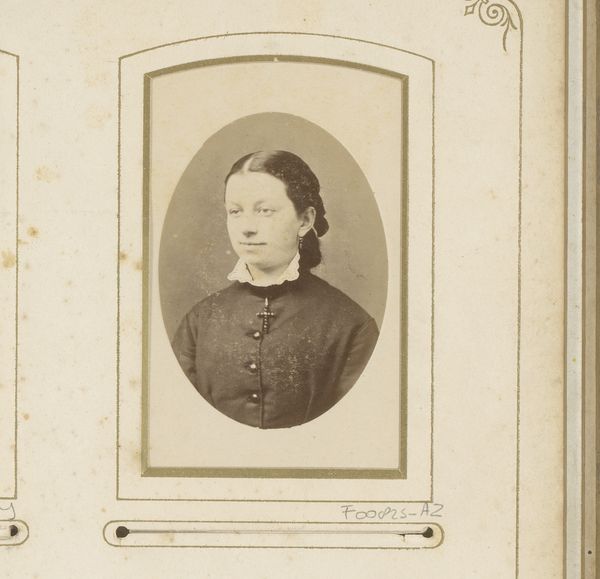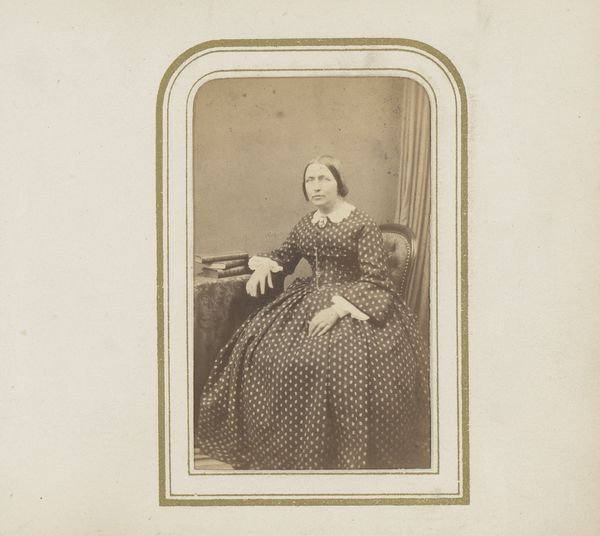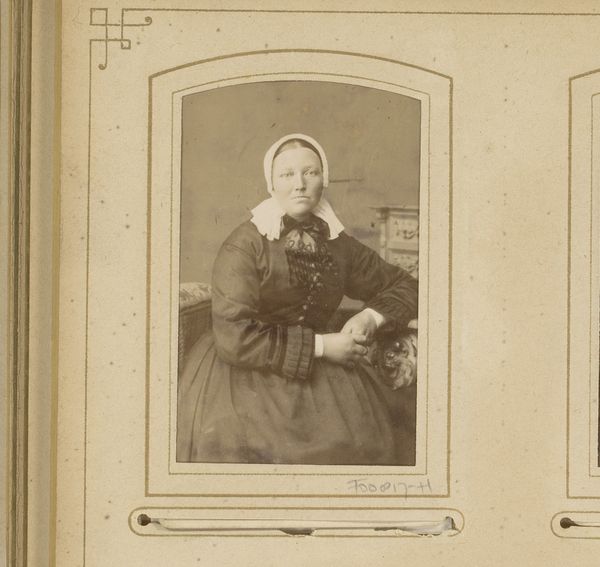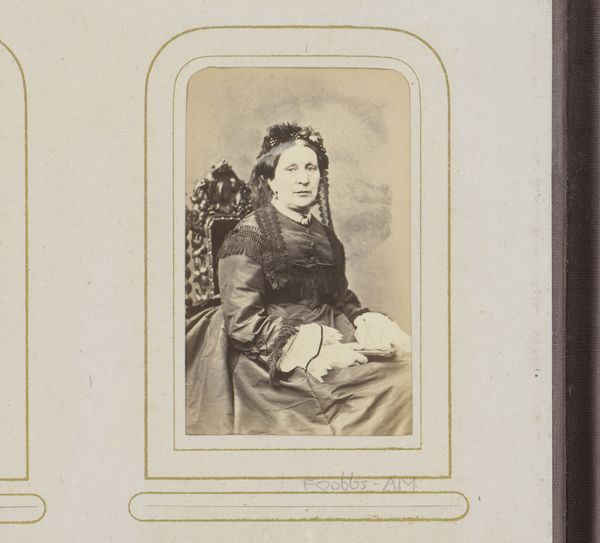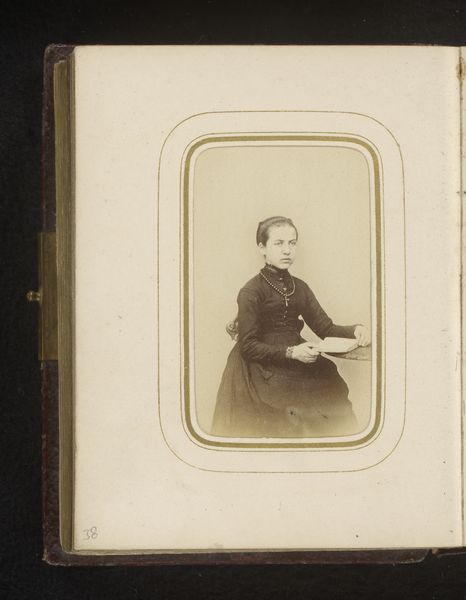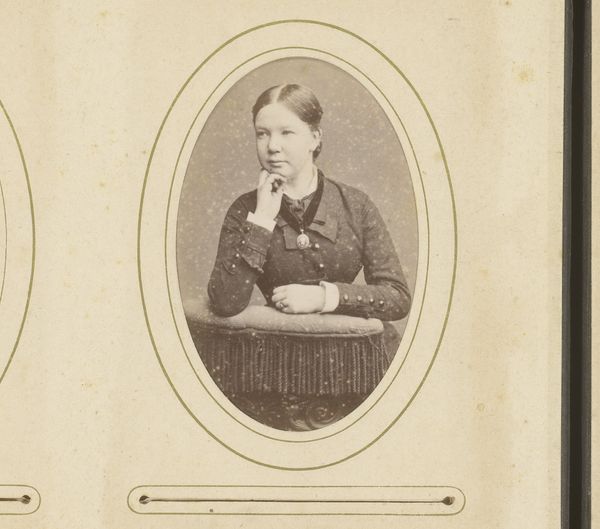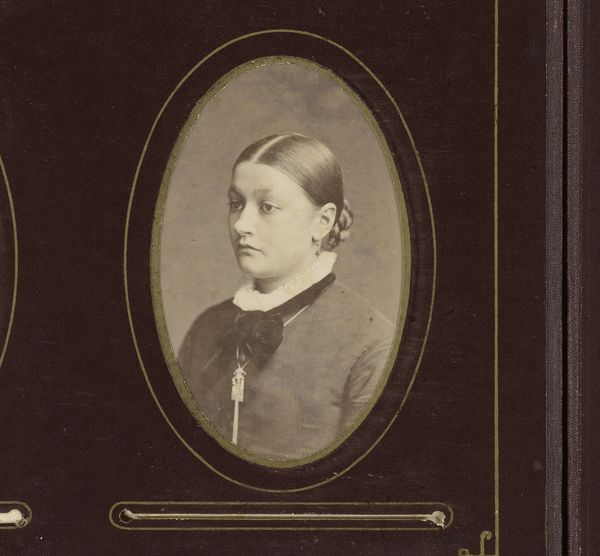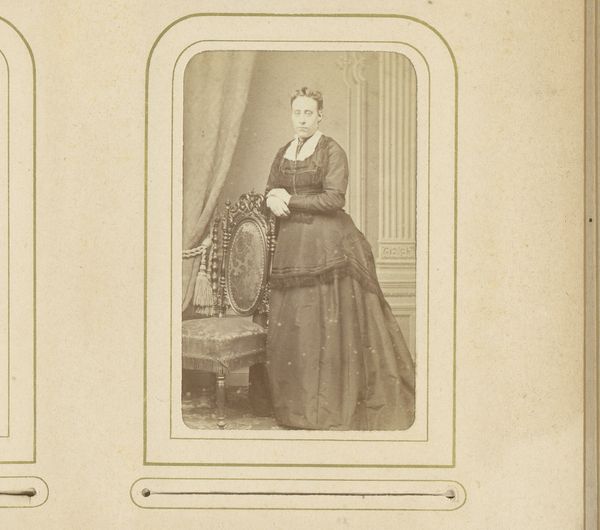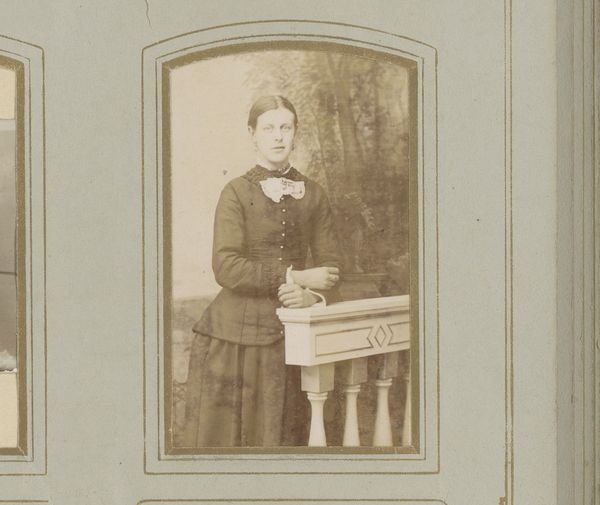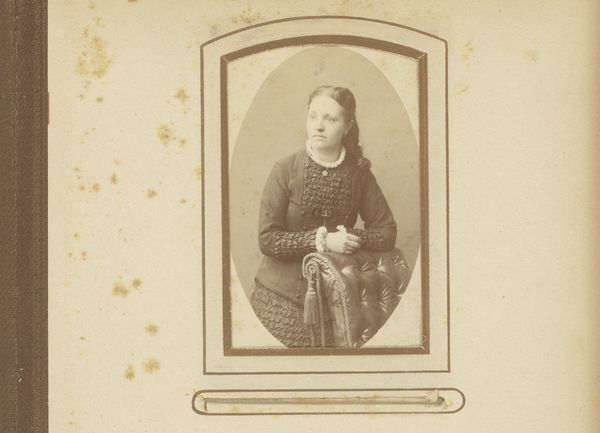
Portret van een vrouw, zittend aan een tafel met boek in de hand 1874 - 1900
0:00
0:00
photography
#
portrait
#
still-life-photography
#
photography
#
genre-painting
#
realism
Dimensions: height 82 mm, width 51 mm
Copyright: Rijks Museum: Open Domain
Curator: Looking at this portrait, one can immediately note the somberness imbued through its sepia tones. The sitter, rendered in an oval frame, presents an intriguing subject for contemplation. Editor: I find the pose and props, especially the book, incredibly deliberate. They speak volumes about constructed identity within the constraints of 19th-century womanhood. Let's start with the artwork details. This photograph, taken by Richard Lanzendorf, is titled "Portret van een vrouw, zittend aan een tafel met boek in de hand" – Portrait of a woman seated at a table with a book in her hand, and dates between 1874 and 1900. Curator: Indeed. The choice of photography as a medium is also significant, diverging from more traditionally esteemed artistic mediums like painting. This shift in aesthetic representation during the period deserves examination. Its grainy texture certainly gives it a realist air. Editor: Agreed. Photography, by its inherent mimetic function, could also subvert existing patriarchal structures by offering alternative forms of visibility to women. The sitter, for example, holds a piece of paper – perhaps alluding to her literacy, further contesting prescribed roles for women in the public and private spheres. I also see agency in her gaze, almost daring to make contact. Curator: Her introspective pose—hand resting on her face—might signal intellectual profundity or, conversely, boredom. The book, a symbol of learning, could represent mere conventional posing rather than an indicator of erudition. What seems more interesting to me is the composition’s dependence on tonal contrast, from the delicate collar to the solid blacks and grays of her dress. Editor: Yet the very act of depicting a woman engaged with literacy, regardless of true intent, challenges societal expectations of female roles in this period. Her access to literacy challenges the enforced separation between her intellectual capabilities and the dominating ideology that kept most women away from literature or critical writing. Curator: Perhaps our disagreement emphasizes a shared point: visual narratives seldom unfold transparently. Editor: Precisely. There's so much left unsaid within the photographic frame that warrants our further consideration.
Comments
No comments
Be the first to comment and join the conversation on the ultimate creative platform.
